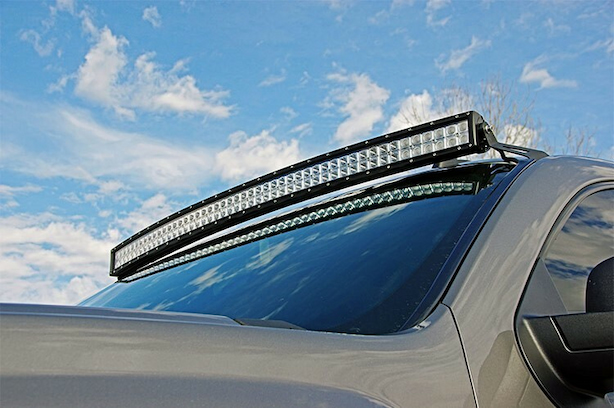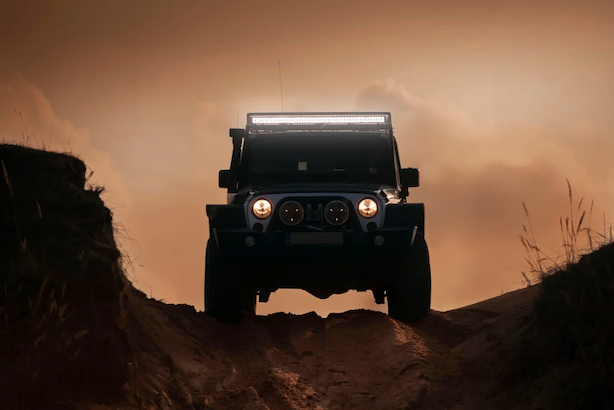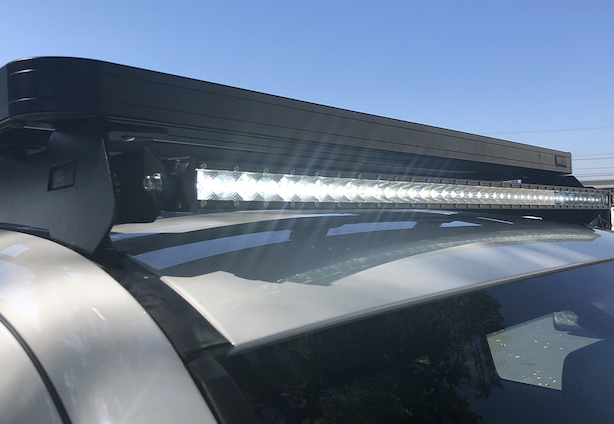Off-Road LED Light Bars: Get Superior Illumination Off the Pavement
- Tweet
-
- Pin It
Your lighting needs grow drastically once you leave the tarmac. The bush is unforgiving in all manners of speaking, and drivers face haze, dust and low visibility even during the day. There’s no point in emphasising that things only get worse once dusk sets in. Fitting your ute or 4WD with adequate lighting and in the right places means you lower the risk of serious damage when hitting larger rocks, stumps, any of Aussie’s furry and scaly wildlife or other vehicles hard to spot.
Drivers are blessed with options. Recent tech advancements mean what was once only the refuge of those with deep pockets is now available for the rest of us. LED lights in different designs have become the norm, simply because of how good they are. They’ll light up your way in all directions and to distances that weren’t possible just a few years ago, and bear the brunt of harsh outback environments. For any off-roading rig, a respectable off road led light bar, mounted higher up means increased visibility at all times and in all road and weather conditions.
Contents
What are LED Light Bars?

LED light bars are auxiliary driving lights sourced with LEDs and beam light higher from the vehicle. They provide an efficient and bright light source, sparing power needs and beaming loads of light. They’re also more durable than traditional light solutions, like front driving lights, and leave your headlights or fog lights in the dark. What’s more, with all the brands now available, including renowned local names, they are more affordable than ever.
Why You’ll Want an Off Road LED Light Bar?

Not long ago, off-road lighting was handled with HIDs and halogens. All that has changed, and for the better. Beam output is much higher for the space, meaning more LEDs can be packed in smaller units. Durability is better, as there’s no heat generated from gases or filaments. This is one factor contributing to longer life cycles and any light fitted with an LED array will outlast traditional bulbs. Another factor is the metal housings and tough polycarbonate lenses to brush away anything coming your way. Efficiency is also greatly improved, with LEDs in comparable light needing 80 per cent less power than halogens and up to 50 per cent less for HIDs. Reduced power draw means less strain on car and secondary batteries, allowing off-roaders to fit other needed extras, like winches and CB radios, without fretting about dead batteries.
What’s Right for You?

If you’re sold on the benefits, then sourcing a high-quality off-road LED light bar should be done carefully to fulfil your lighting needs. Here’s what to look for:
- Brightness – Overall brightness levels are stated in Raw Lumens, or how much light the LED puts out under ideal conditions. What you see is Rated Lumens, and this takes into account designs, outside temperatures and other factors. LEDs just fall short of the best HIDs for overall brightness, but this is also changing. All 4×4 LED bars have more than ample lighting meaning beams are thrown over a thousand meters ahead. You’ll have enough visibility and time to make abrupt corrections while driving and avoid mishaps.
- Single or Dual Rows – A 4WD LED light bar can be optioned with LEDs aligned in a single or dual row. LEDs in single-row bars are bigger, but produce slightly less light. The benefit is that they require less power to do so, and are also cheaper. When you need the highest possible brightness, get dual row bars.
- Sizes – How big the bars are will determine light spread and output. Smaller, single-row bars start at 30cm, while bigger dual-row bars can be as wide as the whole vehicle, at 2 metres. Generally, something within that range is preferred and will give you all the light you need.
- Beams – Lights bars usually put out a narrow angled spot beam to project light further into the distance. There are also combination bars, with LED arrays fitted to the edges to produce similar effects as wider-angle flood beams. These may also have curved designs.
- Build Quality – Off-roading conditions are tough, and you’ll want to put money into something that will last. Housings are aluminium, water and dust proof with the proper seals (IP ratings and industry-approved certifications) and handle the temperature extremes of the bush. Outer casings and covers are polycarbonate and up to the job. Look for LED chips from good brands like Cree, Osram or Narva to ensure long life cycles, with 50000 working hours now the norm.
- Colour Temperatures – You’ll want lights that are easy on the eyes and prevent driver fatigue over longer distances. Colour temperatures are where halogens (with a yellowish tint) and HIDs (going on blue/purple) failed drivers. LEDs solve this issue as they can be adjusted nearer to daylight, or around 5500 to 6000 Kelvin, literally turning night into day. There’s less strain on the eyes, so driving is safer.
What to Expect to Pay?
Different factors come into play here. Size, rows, brightness levels, LED chips and efficiency are all important, and the more of each the higher the prices. Smaller single-row lights with cheaper chips will be the least expensive, and start from $100. Decently sized (100cm) bars in dual rows, a dual-beam layout, high lumens ratings and chips from the best chip makers hover around $500. Decide on how much light you need and shop according to budget.N
- The Sound of Tradition: An In-Depth Look at the Fender Telecaster Series
In the realm of electric guitars, few instruments hold...
- April 16, 2024
- Professional and Stylish: How to Select the Right Men’s Uniform for Your Business
What kind of picture do you want to present...
- April 9, 2024
- Warehouse Organisation: The Role of Stillages in Streamlining Operations
If you’re a business owner who deals with goods,...
- April 8, 2024
- 5 Thoughtful and Practical Gifts for New Parents
Welcoming a new baby into the world is an...
- March 29, 2024
- Wood Fired vs Gas Pizza Ovens: Which One Should You Get?
If you love pizza, then owning an oven designed...
- March 26, 2024
- Beyond the Bars: A Guide to Choosing the Right Cat Cage
Sharing your life with a furry friend is a...
- March 22, 2024







